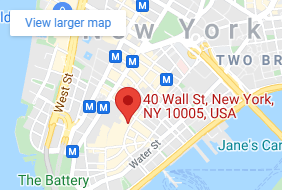Liposuction Malpractice Attorneys in New York City
What is Liposuction?
Liposuction, which is sometimes referred to as lipoplasty, is removal of fat (lipo) from the body of a patient, utilizing a suction apparatus to remove the fat. It is considered a cosmetic procedure, and is usually performed on areas of the body such as the abdomen, thighs, buttocks, and the neck. While, in theory, the various liposuction or lipoplasty procedures seem simple, the performance of such procedures has been shown to be among the most dangerous of all cosmetic procedures.
With respect to the potential for aesthetic damage associated with liposuction or lipoplasty procedures, if the wrong amounts of fat are removed from the wrong places, gross deformity, leaving the patient with lumps, or dents in the contours of their body where the liposuction or lipoplasty procedures were performed.
How does Liposuction Work?
Liposuction malpractice can occur when the procedure is performed in a negligent manner. The mechanism of liposuction’s efficacy is akin to a drinking straw. By utilizing a cannula (hollow tube) and an aspirator (a device that suctions), as the basic mechanics, removal of fat cells for target areas of the body is facilitated.
Beyond the general mechanism of liposuction or lipoplasty, various techniques are employed to either aide in the removal of fat cells, or diminish the discomfort or risk which the procedures present to the patient. For example, when employing “wet liposuction” the plastic surgeon may inject into the prospective fat-removal-site, a local anesthetic, such as lidocaine (to numb the area), and adrenaline (to minimize the diameter of the blood vessels), and a salt solution to aide in the loosening of the fat cells.
That can be contrasted with “tumescent liposuction,” where a local anesthetic utilized (usually lidocaine) and a vasoconstricting agent (usually epinephrine) are injected directly into the fat; or, “laser assisted liposuction,” where the introduction of apparatuses, utilizing thermal and photomechanical energy, is employed to achieve lipolysis (or the breakdown of lipids, such as fat); or “ultrasound-assisted liposuction,” where ultrasound are employed to, in essence, liquefy the fat-cells in the prospective fat-removal-site, prior to suctioning them out of the body.
The standard, and most frequently utilized technique for performing liposuction or lipoplasty is “suction-assisted liposuction,” where, through a cannula attached to a vacuum, which is inserted through a small incision in the prospective fat-removal-site, the plastic surgeon, utilizing a “to-and-fro” method, breaks-up and suctions out the fat cells from the prospective fat-removal-site.
What are the Side Effects of Liposuction?
The general, common, side effects of liposuction or lipoplasty, include:
- pain
- bruising
- swelling
- scarring
- weakness;
- numbness; and
- limited mobility
Injury from Liposuction Malpractice can Include
- allergic reactions to medication
- infection
- epidermal injury (damage to the skin)
- punctured organ
- perforated fascia
- irregularities in the epidermis (lumps or dents in the contours of the liposuction or lipoplasty site)
- thrombosis (blood clots)
- lidocaine toxicity (which is a risk in “super-wet” and “tumescent” methods)
- fluid imbalance (which can occur during recovery); and, even,
- death
Legal Help for Liposuction Malpractice Victims in New York City
If you or a loved one have undergone liposuction and believe that you have suffered medical injuries due to liposuction malpractice, contact a liposuction malpractice lawyer at Finz & Finz, P.C., now toll free at (855) TOP-FIRM or complete the Free Liposuction Malpractice Case Evaluation form.



























